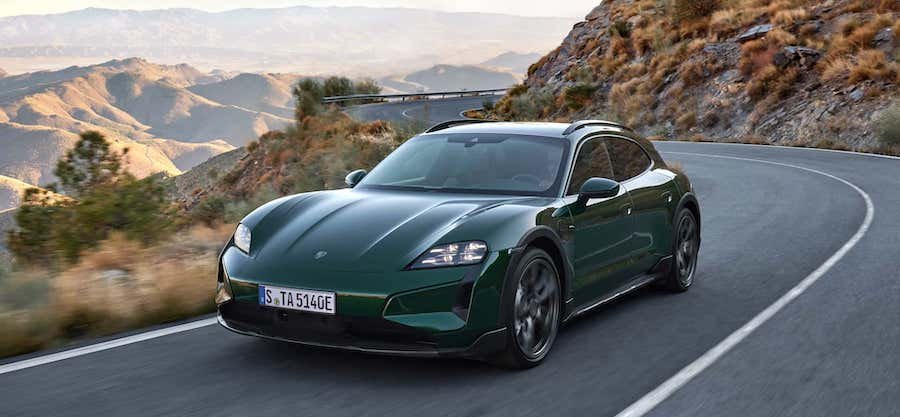New Porsche Taycan Turbo S Has 938 HP, Sprints To 60 MPH In 2.3 Seconds

When Porsche facelifts a car, it doesn’t make a ton of visual changes, but it goes to town on the mechanical components. And so it is with the 2025 Taycan. While it may look like the old model, this is a thoroughly revised electric sedan.
We’ll start with the big headline figure. The Taycan Turbo S makes 938 horsepower when using launch control – up from 750 hp in the previous model. And you thought Porsche would let Tesla and Lucid run away with the ultra-mega-powerful EV sedan market. The result of this huge power increase is a claimed 0-60 mph time of 2.3 seconds. It also makes the Taycan Turbo S the most powerful Porsche road car yet, eclipsing the 887 hp of the 918 Spyder.
The power comes from new motors that occupy the same dimensions as the previous model’s, but get revised internals for more power. Power from the rear motor rises by up to 107 hp depending on model, while the motor itself is around 20 pounds lighter than before. All Taycan models get new motors, and while Porsche hasn’t yet published full specs for the whole lineup, it did say the base, rear-drive model gets bumped to 483 hp.
But for as much effort as Porsche put into bumping horsepower, it seems even more was put into upping efficiency and range. The first Taycan was criticized for relatively low range figures, and while real-world numbers were often better than EPA figures, you can tell the criticism stung Porsche. EPA figures for the new Taycan aren’t out yet, but our sister site InsideEVs managed 300 miles in a range test of a Taycan 4S in less-than-ideal weather conditions, suggesting a big bump in real-world range.
A new battery pack with revised cell chemistry is the big thing here, with gross capacity for the larger Performance Battery Plus rising from 93.4 kWh to 105 kWh. Net, or usable capacity is 98.6 kWh. Base models get a 89-kWh gross, 83.6-kWh net battery pack. Both packs are lighter than their predecessors, with the base battery offering about as much capacity as the previous upgrade unit.
Porsche also upped the Taycan’s energy-regeneration capability. Where old all-wheel drive models could regenerate up to 290 kW, the new one can do up to 400 kW. The threshold for the handover between regenerative and friction braking is also higher, up to 0.497 g from 0.3 g in the old car. New wheels and range-optimized summer tires also help bump the distance the Taycan can travel on a charge. Other revisions to aerodynamics, thermal management – including a new heat pump – and a new pulse inverter all help boost range.
Charging speed is also up. Before, the Taycan could charge at up to 270 kW in ideal conditions; now, it can take 320 kW, and Porsche claims just 18 minutes to charge from 10 to 80 percent. InsideEVs editor-in-chief Patrick George actually saw a Taycan 4S prototype take just 16 minutes to go from 8 to 80 percent.
There are chassis changes, too. All US-spec Taycans get air suspension as standard, and optional on all-wheel drive models is Porsche Active Ride, the company’s new and extremely clever active-suspension system.
Inside, there’s not a ton to talk about beyond a revised gauge cluster and infotainment system, but models with the Sport Chrono package do get a push-to-pass button for extra power on demand. There’s also a leather-free interior option with Porsche’s houndstooth-esque Pepita trim for the seat centers.
All of these upgrades come at a price, though. The entry-level 2025 Taycan costs $101,395 compared with $92,550 for the previous version. At the top of the heap is the $213,695 Turbo S Cross Turismo, which is a whopping $14,695 more than its predecessor.
US deliveries of the 2025 Taycan will begin later this summer. We’ll still have to wait a little while to see the new GTS models, plus that crazy Nurburgring record-setter Porsche has cooking.
Related News
